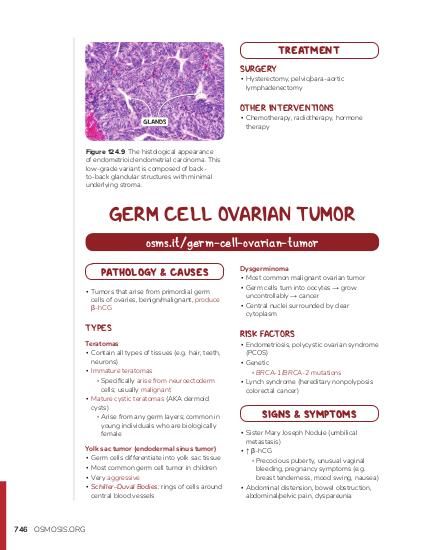All individuals who die from their bladder cancer do so due to metastatic disease. Available from the Annals of Internal Medicine Web site.

Pin On Advanced Pathophysiology
Typically leads to squamous cell carcinoma of the bladder.

Bladder cancer screening usmle. Available in Portable Document Format PDF in English. Primary carefeasible screening tests for bladder cancer include identifying hematuria with a urine dipstick or microscopic urinalysis urine cytology and tests for urine biomarkers. One challenge of screening for bladder cancer is accurately identifying cases of early-stage cancer subepithelial and in situ with a high risk for progression.
A cystoscope a thin lighted tube is inserted through the urethra into the bladder. Screening for bladder cancer. A cystoscope a thin tube-like.
Screening logs from a pilot randomized controlled trial of radical cystectomy versus chemoradiation therapy for muscle-invasive bladder cancer. Agency for Healthcare Research and Quality. The NCCN Guidelines for Bladder Cancer divide treatment recommendations for urothelial carcinoma of the bladder according to nonmuscle-invasive disease Ta T1 and Tis and muscle-invasive disease T2 disease.
Kaushik D1 Shi Z2 Liss MA3 Wang H3 Jha RP3 Choi BY4 Pruthi DK3 Ha CS2 Mansour AM3 Svatek RS3. Epidemiology risk factors. Screening Routine screening in all patients for bladder cancer with either urinalysis or cytology is not recommended Screening for bladder cancer in high risk individuals those exposed to dyes leather smokers is controversial no clear recommendations.
1Department of Urology University of Texas Health San Antonio TX. Each urine sample was examined via cytology urinalysis culture and NMP22 protein assay. The information presented is limited to urothelial carcinoma unless specified otherwise.
Incidentally discovered hematuria should not be neglected. At this time no major professional organizations recommend routine screening of the general public for bladder cancer. Bladder tumor markers are not expected.
This is because small amounts of blood in urine can be caused by other medical conditions such as a urine infection. According to the study bladder cancer screening in a population with a 4 percent bladder cancer incidence led to an increase of 30 life years per 1000 participants at a 101000 cost savings for the society. All patients underwent office cystoscopy and transurethral resection andor biopsy if a bladder tumor was suspected.
There were 79 130 patients being monitored with a known history of bladder cancer. Bladder cancer tumor markers performed by immunoassay are ONLY considered medically necessary as an adjunct in the diagnosis and monitoring of bladder cancer in conjunction with cystoscopy. This overview represents the updated European Association of Urology EAU Guidelines for Non-muscle-invasive Bladder Cancer NMIBC TaT1 and carcinoma in situ CIS.
The aim is to provide practical recommendations on the clinical management of NMIBC with a focus on clinical presentation and. This activity reviews the evaluation and management of bladder cancer and highlights the interprofessional teams role in improving care for patients with this condition. Tissue samples may be taken for biopsy.
Recommendations from the US. Another area of uncertainty is determining whether providing earlier less toxic treatment such as immunotherapy with the intention of preventing symptomatic progression results in fewer overall harms to the patient than providing more toxic treatment. Bladder cancer tumor markers performed by immunoassay are not covered for screening of all patients with hematuria.
Stay healthy at any age. These factors are used to estimate the probability of recurrence and progression to a more advanced stage. This is because no screening test has been shown to lower the risk of dying from bladder cancer in people who are at average risk.
It is the most common urinary tract neoplasm with urothelial carcinoma UC being the most common histologic type. Although many people with bladder cancer have blood in their urine testing for blood in the urine is not a useful screening test for the general population. Theusmlechannel usmle cancerCervical Cancer Screening Guidelines Pap smear Reflex HPV DNA Test Colposcopy Follow up of abnormal screening tests- compl.
Preventive Services Task Force. Urothelial carcinoma of the bladder is the most frequently diagnosed cancer of the urinary tract other than prostate cancer and its incidence has been slowly rising over several decades. Management of bladder cancer is based on the findings of the biopsy and TURBT specimens with attention to histology grade and depth of invasion.
Screening for bladder cancer Screening is the use of tests or exams to look for a disease in people who have no symptoms. Of the 608 patients 226 372 presented with microscopic hematuria 143 235 with. As of 2019 there is insufficient evidence to determine if screening for bladder cancer in people without symptoms is effective or not.
A urine sample is less invasive simpler and quicker than other bladder cancer tests such as a cystoscopy. Cystoscopy is a procedure to look inside the bladder and urethra to check for abnormal areas. Bladder cancer is any neoplasm that arises from the urinary bladder.
Risk factors for bladder cancer tests to detect it evidence generally showing insufficient benefit to screening the general population with those tests and a discussion of screening high-risk populations will be. Testing urine for blood. Two tests may be used to screen for bladder cancer in patients who have had bladder cancer in the past.
Bladder cancers can be superficial non-muscle invasive muscle invasive and metastatic in nature. The authors proposed that bladder cancer might partly be caused by the bladder directly contacting carcinogens that are excreted in urine although this has not yet been confirmed in other studies. Screening and Early Protection Provides the Real Opportunity to Reduce Bladder Cancer Mortality.

Usmle Step 1 What Is Causing Teenager S Abdominal Pain American Medical Association

Bladder Cancer Oncology Medbullets Step 2 3

Usmle Step 2 Ck High Yield Expert Review From Kaplan Test Prep Youtube

Ureter Urinary Bladder Urethra

Previous Year Question On Carcinma Urinary Bladder Based On Neet Pg

Clinical Review For The Usmle Step 1 By Surgisphere Issuu

Pancreatitis Biochemicals Amylase Lipase Critical Care Nursing Internal Medicine Diagnosis

Bladder Cancer Oncology Medbullets Step 2 3

Prostate Cancer Concise Medical Knowledge

Pin On Https Drawittoknowit Com










